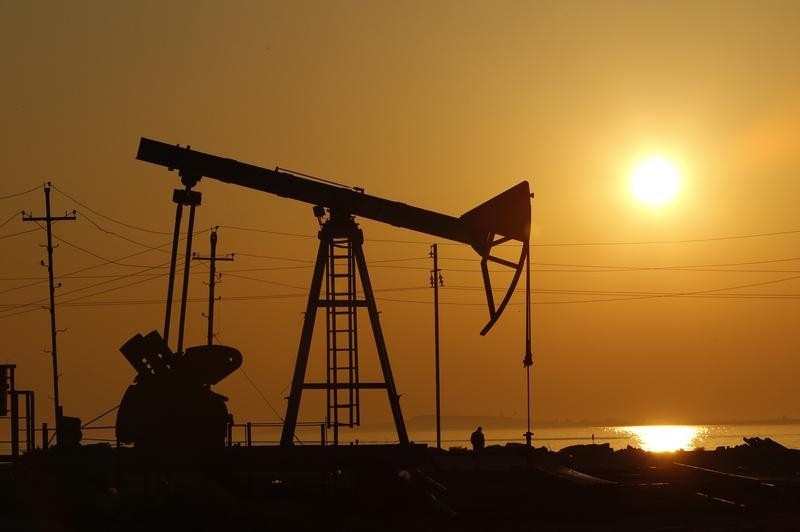* Brent crude prices near 11-year lows as demand sags
* WTI premium remains as U.S. lifts export ban, production
stalls
* But falling U.S. output not enough to end global
oversupply
By Henning Gloystein
SINGAPORE, Dec 29 (Reuters) - Crude oil futures came under
renewed pressure early on Tuesday as fears of slowing demand
added to near-record global production levels, which have
already slashed prices by two-thirds since the middle of last
year.
Front-month U.S. West Texas Intermediate (WTI) futures
CLc1 were trading at $36.75 per barrel at 0105 GMT, down 6
cents from Monday's close.
The international benchmark Brent LCOc1 was at $36.59 per
barrel, down 3 cents from their last close and less than a
dollar away from 11-year lows reached earlier in December.
Both contracts are down by two-thirds since prices started
tumbling in June 2014.
While output from exporters like Russia, the Organization of
the Petroleum Exporting Countries (OPEC) and U.S. shale drillers
has been at or near record highs, demand has so far held up
strong, preventing oil prices from falling even lower.
That may be about to change.
Oil analysts JBC Energy said that refined oil "product
demand growth in Europe turned negative in October (-170,000
barrels per day year-on-year)" for the first time in 10 months
and that diesel and gasoline demand growth in China, one of the
strongest price supporters of the past year, was also slowing.
"The demand situation does not support a return to a higher
price environment," derivatives exchange CME Group (O:CME) said.
"China is still decelerating. Growth in emerging markets is
slow. Europe may grow 1 percent to 2 percent in real GDP terms,
the U.S. a little better, and Japan a little less. No major
demand surges here," it said, adding that demand was also
sagging due to improving transport efficiency.
One change in oil trading has been that WTI flipped to a
premium versus Brent CL-LCO1=R this month after the United
States lifted a decades-old ban on exporting U.S. crude oil.
Analysts expect this price structure to stay in place,
especially should global markets suffer from slowing demand and
ongoing high supplies while the United States tightens.
U.S. shale drillers have piled up huge amounts of debt and
are struggling to stay in business as low prices hit their
revenues and ability to pay down loans.
"The ongoing low oil-price environment points furiously
towards a rough 2016 for U.S. producers," oil analysis firm
ClipperData said, with some estimates pointing to a 500,000
barrels per day (bpd) fall in U.S. production in 2016.
However, with most analysts estimating global production
exceeding demand by at least that amount and perhaps even more
than 2 million bpd, even such a cut in the U.S. would unlikely
be enough to fully rebalance world oil supply and demand.
(Editing by Himani Sarkar)
